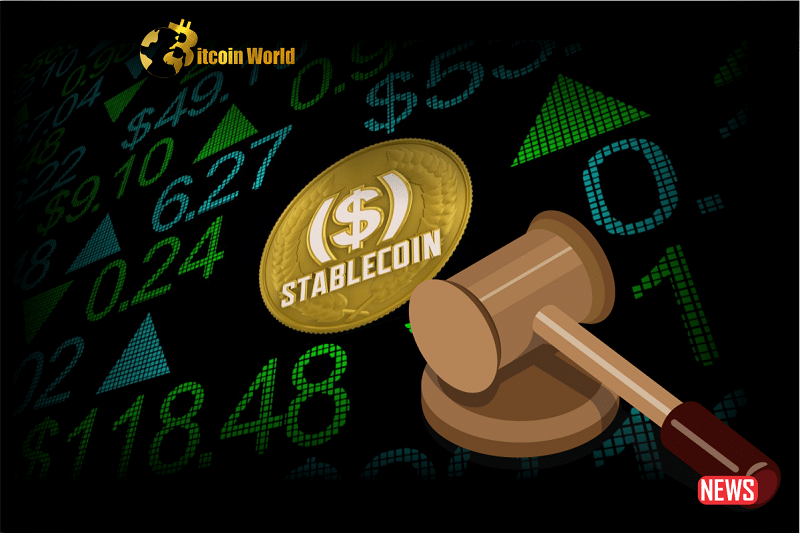The world of stablecoins just witnessed a significant development. Imagine a digital dollar, designed to hold its value steadily – that’s essentially what a stablecoin aims to be. Now, picture lawmakers in Washington, D.C., debating how to oversee this evolving form of digital currency. Well, that’s precisely what happened yesterday, July 28, 2023, as the House Financial Services Committee voted on a comprehensive regulatory framework for stablecoins in the United States.
A Milestone Marked by Division
This wasn’t your typical unanimous decision. While the passage of the bill marks a crucial step towards regulating stablecoins, the path it took was anything but smooth. Long-standing bipartisan talks ultimately faltered, leading to a vote sharply divided along party lines. The bill sailed through with a 34-16 vote, fueled by Republican support and a handful of Democrats who broke ranks. Sound familiar? This mirrors a recent vote on broader crypto market regulations, highlighting the growing importance – and contention – surrounding digital currencies.
Why the Divide? Whose Side Are You On?
So, what caused the breakdown in negotiations? House Financial Services Committee Chair Patrick McHenry (R-NC) didn’t mince words, pointing the finger at the White House for allegedly interfering in the legislative process. Democrats, on the other hand, voiced concerns about what they perceived as a rushed process, arguing for more thorough consideration.
The tension was palpable. Democrats employed procedural tactics to slow things down, suggesting a delay until September or later. Just days before, a bipartisan agreement seemed within reach, offering hope for a collaborative approach. Now, the future of the bill and the possibility of reviving those negotiations hang in the balance. Will cooler heads prevail, or is this the new normal for crypto legislation?
Beyond Stablecoins: Another Crypto Measure Advances
Interestingly, the committee also advanced another crypto-related measure focused on self-custody. This bill, too, passed along party lines. However, with the current split control of Congress, its journey to becoming law looks like an uphill climb. It raises the question: Can significant crypto legislation truly move forward in such a polarized environment?
The Bigger Picture: Navigating Innovation and Stability
Why does all of this matter? As digital currencies gain traction, lawmakers face the delicate task of balancing innovation with the need for financial stability and consumer protection. Think of it like this:
- Innovation: Stablecoins have the potential to streamline payments, reduce transaction costs, and foster new financial applications.
- Stability: Without proper regulation, there are concerns about potential risks to the financial system, such as runs on stablecoin issuers or lack of transparency.
Passing this stablecoin regulatory framework could significantly reshape the crypto industry. It’s a high-stakes game, and the decisions made now will have lasting consequences.
What’s Next? The Road Ahead
The bill’s fate now rests with the full House of Representatives. Expect further debates, amendments, and scrutiny. If it passes there, it moves on to the Senate, where it will face another round of challenges. The crypto community is watching closely, eager to see how the regulatory landscape will evolve in the coming months. Here’s a quick look at the potential journey:
- House Vote: The bill needs majority support in the full House.
- Senate Consideration: The Senate will debate and potentially amend the bill.
- Potential Reconciliation: If the Senate version differs from the House version, a reconciliation process is needed to create a unified bill.
- Presidential Approval: Finally, the bill needs the President’s signature to become law.
Key Takeaways: What Does This Mean for You?
- Increased Scrutiny: Expect greater regulatory oversight of stablecoin issuers.
- Potential for Clarity: The framework could provide much-needed clarity for businesses operating in the stablecoin space.
- Impact on Innovation: The specific regulations will determine the extent to which innovation is fostered or hindered.
- Political Landscape Matters: The partisan divide highlights the challenges in passing crypto legislation.
Looking Ahead: A Shifting Landscape
The passage of this bill in the House committee is a significant step, but it’s just one stage in a longer process. The journey towards a comprehensive regulatory framework for stablecoins in the US is far from over. The coming months will be crucial in determining the final shape of these regulations and their impact on the burgeoning digital asset market. Stay tuned – the story of stablecoin regulation is still being written.
Disclaimer: The information provided is not trading advice, Bitcoinworld.co.in holds no liability for any investments made based on the information provided on this page. We strongly recommend independent research and/or consultation with a qualified professional before making any investment decisions.


